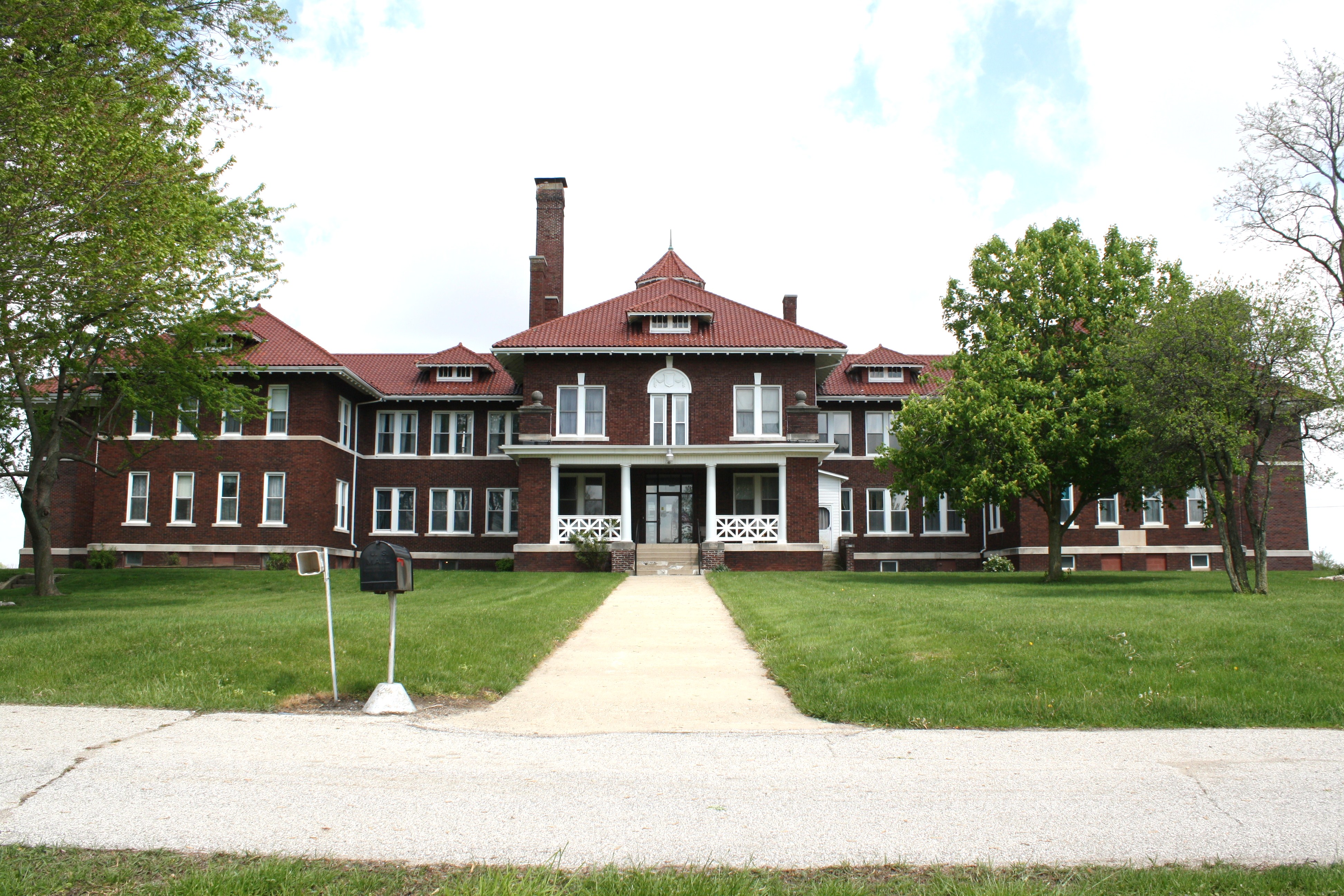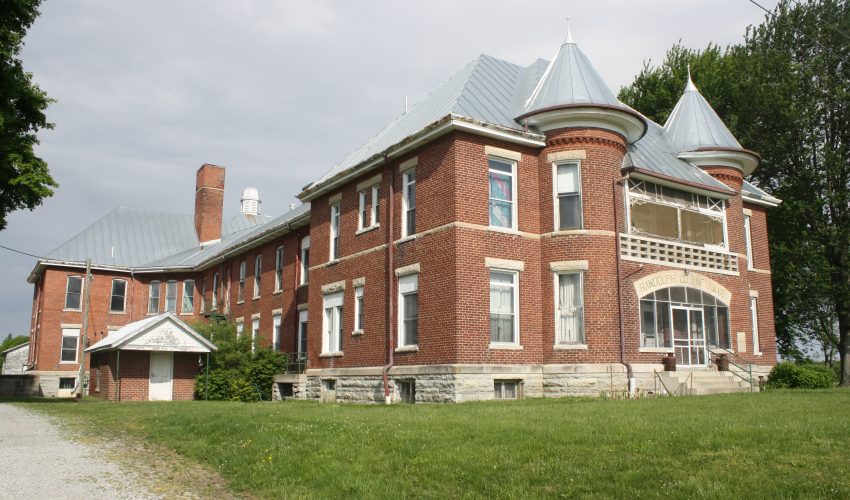NEWS
Seeking Aid for Indiana’s County Homes
Helping address reuse challenges for landmarks that once served the elderly, ill, orphaned, and physically or mentally handicapped.

In 2014, Indiana Landmarks collectively entered county homes on our 10 Most Endangered list. As the delivery of social services shifted throughout the 20th century, enabling the poor or mentally disabled to remain in their own homes, county governments and private owners struggled to find new uses for these historic complexes. To help address the reuse challenge, Indiana Landmarks is nominating several county homes to the National Register of Historic Places.
To aid all county homes, whether in government or private hands, Indiana Landmarks has commissioned a Multiple Property Documentation Form—in-depth research on all county homes that makes future National Register nominations easier. We’re following that step with five National Register nominations (subjects not yet selected), hiring James Glass of Historic Preservation and Heritage Consulting, LLC., to complete both phases of the project.
Indiana’s county homes provided aid to the elderly, ill, orphaned, and physically or mentally handicapped. Like county courthouses, these landmarks vary in construction date and style, but most retain architectural and historical significance. All of the state’s 92 counties had one of these complexes, sometimes called the county asylum, poor farm, sanitarium or home for the insane.
Many of county homes featured an architect-designed main residential building with a superintendent’s residence, supported by outbuildings that included barns, garages and hundreds of acres of farmland to provide a revenue stream. Many county homes have been demolished, and many of those that remain have been closed or sold. Only about a dozen of Indiana’s 92 counties continue to operate functioning county homes.
Some of the surviving county homes have already been officially determined eligible for the National Register, including the Clinton County Home in Frankfort, constructed in the Renaissance Revival style in 1918; the Neoclassical Parke County Home near Rockville constructed in 1930; and the Bartholomew County Home in Columbus, a Modernist design by Harry Weese from 1958.
Listing in the National Register will provide owners of the county homes with financial incentives to support their redevelopment. If owned by a government or non-profit, landmark status will open grant opportunities. Private property owners will be eligible for federal tax credits for rehabilitation. For more information about the Indiana County Homes Project, contact Mark Dollase, Indiana Landmarks’ Vice President of Preservation Services, 317-639-4534 or mdollase@indianalandmarks.org.
Stay up to date on the latest news, stories, and events from Indiana Landmarks, around the state or in your area.





